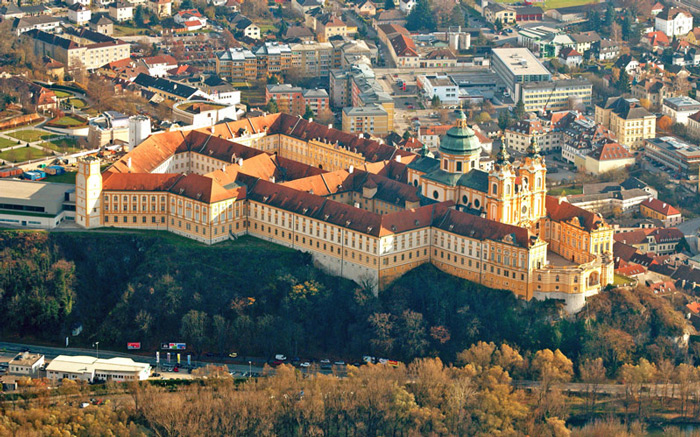
Partly responsible for its grandeur is the fact that it came into existence as the castle and residence of Leopold I. (He was a “Margrave” or military commander responsible for defending one of the border provinces of the Holy Roman Empire.) His successor donated the castle and land to the Benedictines in 1089. Their tenacity and labor ensured that the abbey still exists today. The buildings were remodeled in Baroque form between 1702 and 1736. In addition, however, the Austrian government has also lent a hand, helping to finance a ten year long restoration of the abbey church. It was finished in 1987.
In the photo above, the Danube and our ship, Freya, are just off the picture at the bottom, making for a short ride to the abbey. Our coach parked above the abbey gardens in the top left of the photo. It was almost a beeline walk through the gardens into the main courtyard behind the church. Our route through the buildings is marked below on a simplified model, viewed from the front of the church:
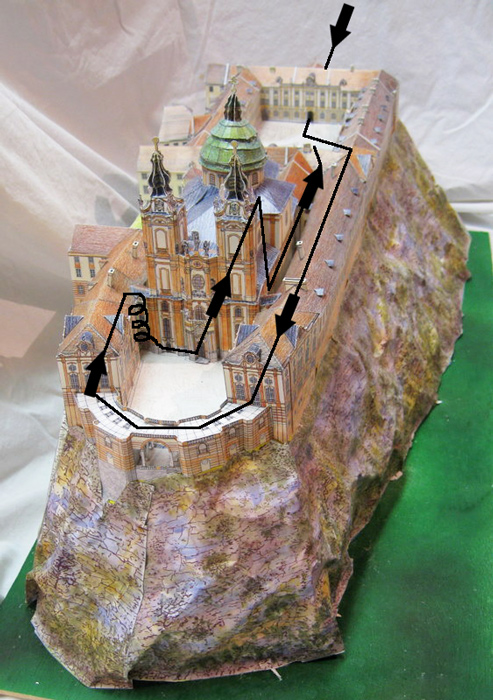
The forecourt we first entered is not on the model above but its entrance is shown below:
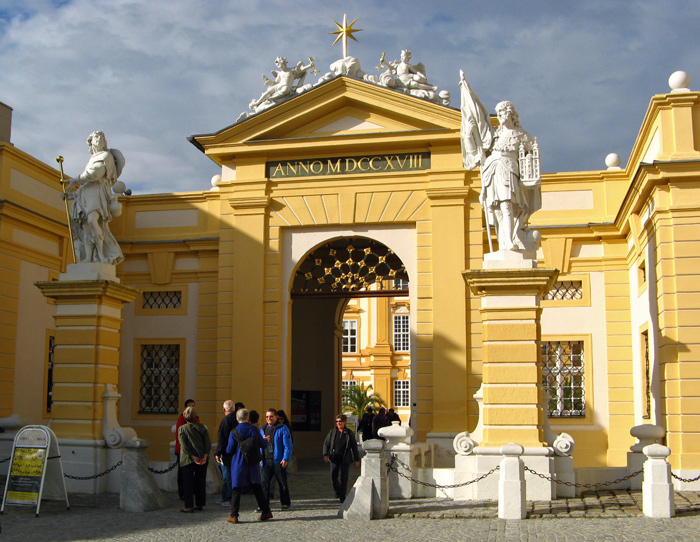
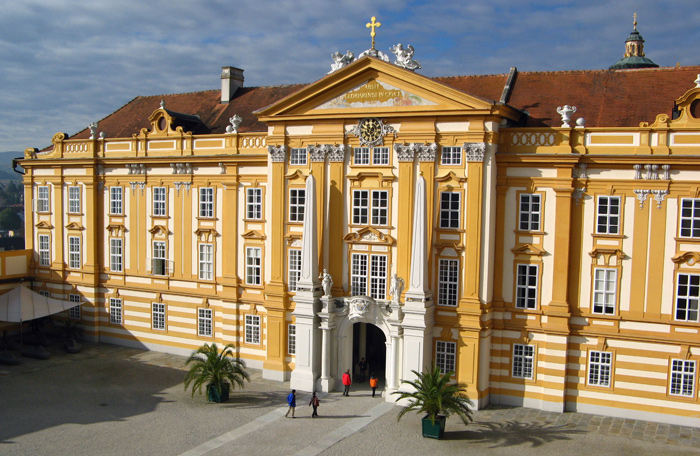
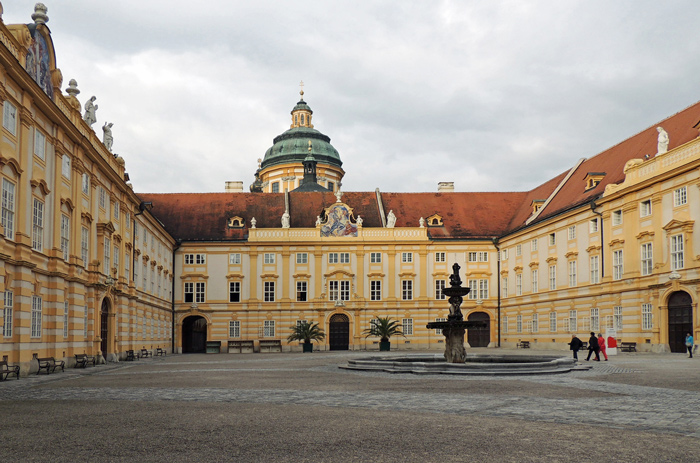
Eventually, we were led into the leftmost door and up a flight of stairs. We soon had a look down the hallway of the long building next to the church:
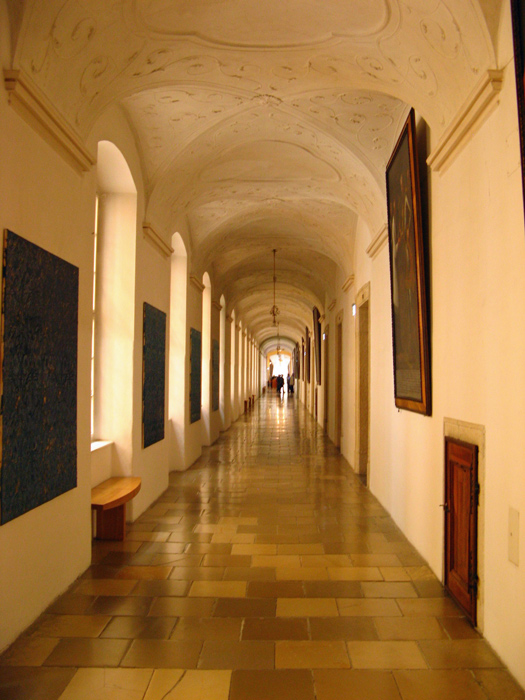
In this museum are many treasures, such as relics of the saints, beautiful frescoes, works of art --- even a scale model of the abbey. Also in possession of the abbey is a crucifix said to contain a sliver of wood from Christ’s Cross. Whether what we saw in the museum was a replica of that crucifix or the original, I could not say --- but would guess it was a replica.
From the crowded museum, where photography was difficult, we entered the spacious Marble Hall. It is two stories tall, has no furniture and its ceiling and walls are magnificently decorated. The ceiling fresco was painted in 1731:
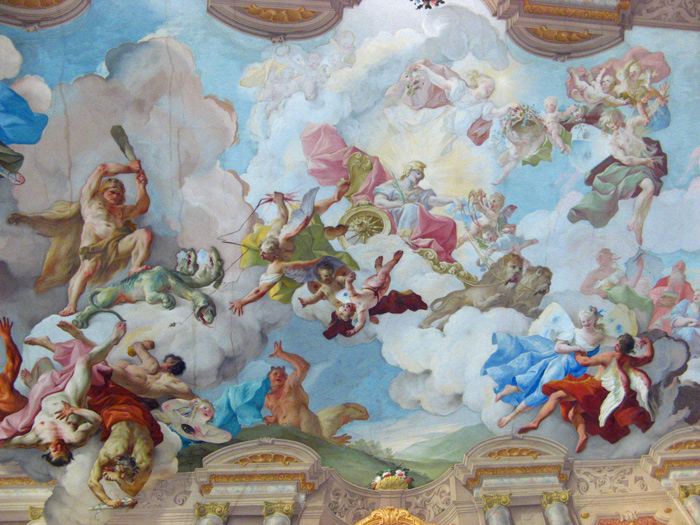
“In the centre is Pallas Athena on a chariot drawn by lions as a symbol of wisdom and moderation. Hercules can be seen to her left, symbolizing the force necessary to conquer the three-headed hound of hell, night, and sin. Both Pallas Athena and Hercules allude to Emperor Karl VI, who liked to be celebrated as a successor to the Roman emperors in the Hercules legend. The guest is shown the essence of the House of Habsburg: The ruler brings the people from dark to light, from evil to good.”
Somehow, I could relate better to the poor chaps who held up the walls --- there must have been a dozen or more of these hardworking guys:
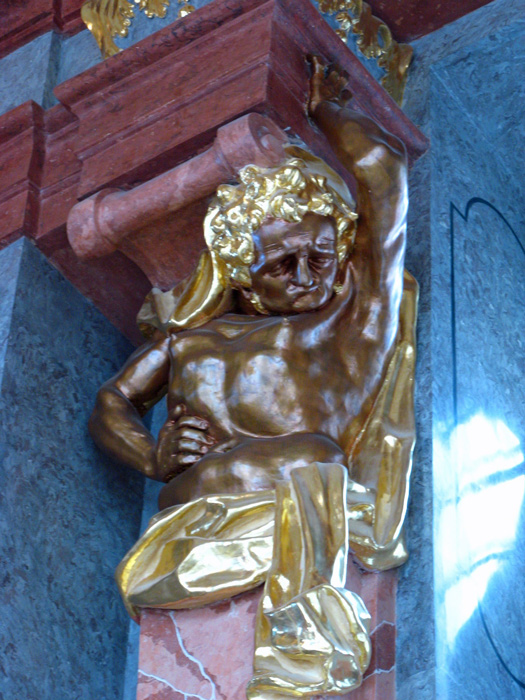
Exiting the Marble Hall, we crossed the semicircular terrace. Besides fresh air, it provided a chance to look down on the town of Melk and examine the church facade:
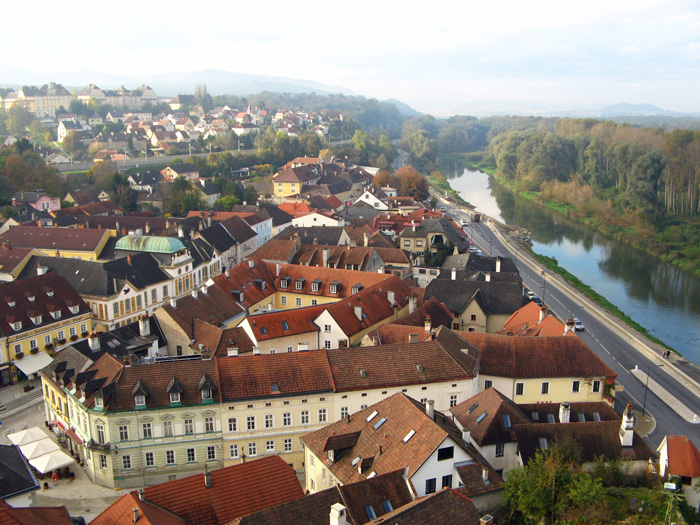
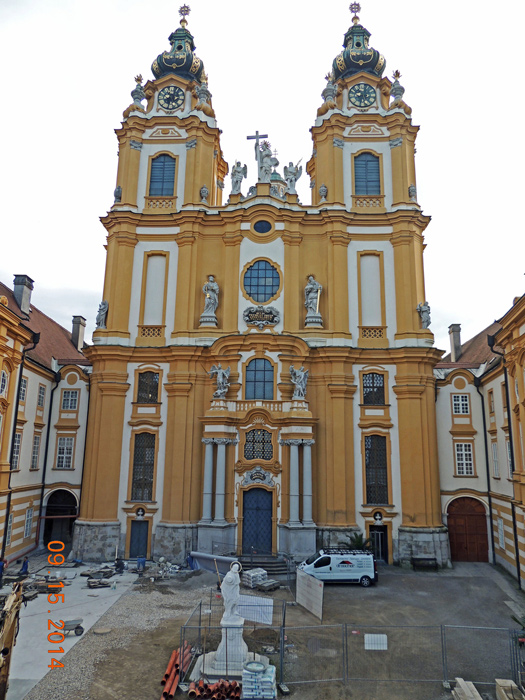
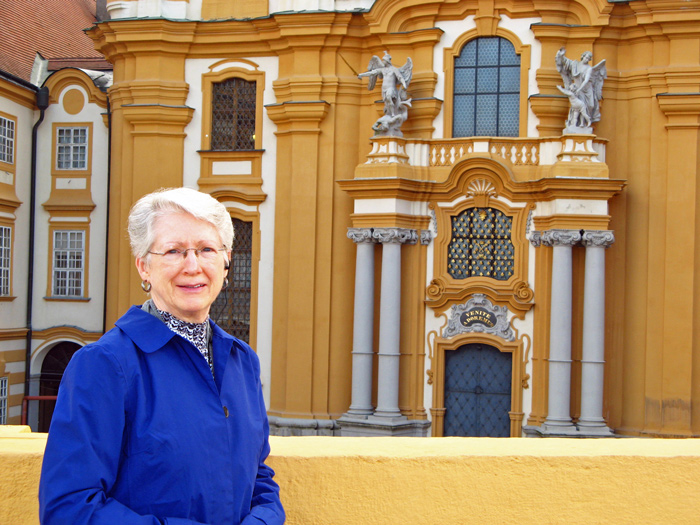
From the terrace, we entered the library --- floor to ceiling with books and crowned with another beautiful fresco:
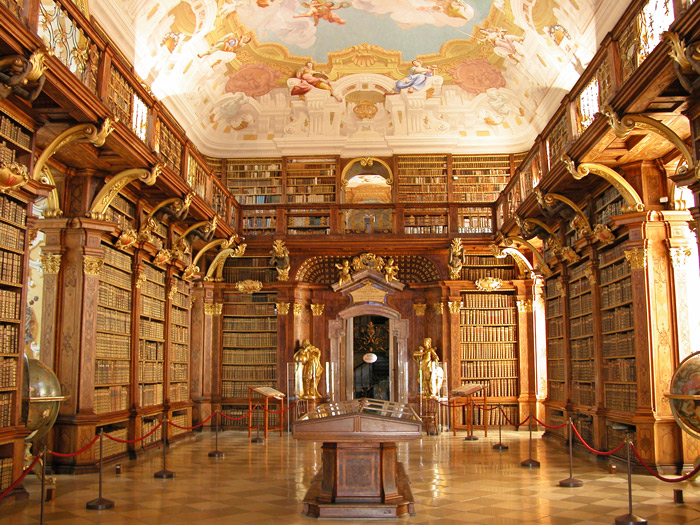
On the far side of the library, a spiral staircase took us down to church level:
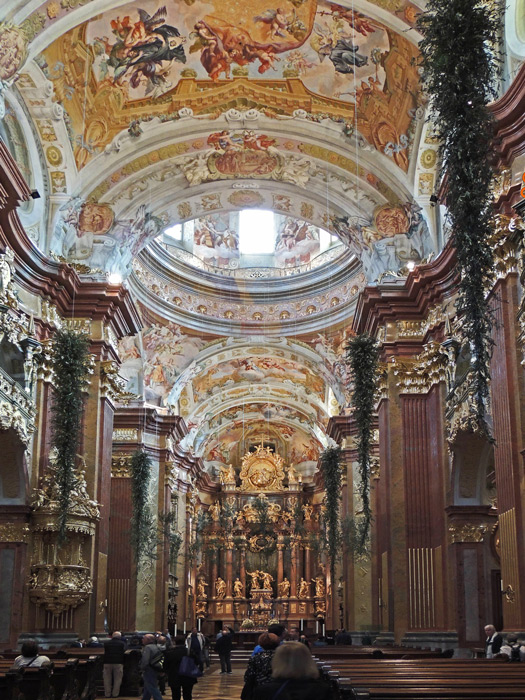
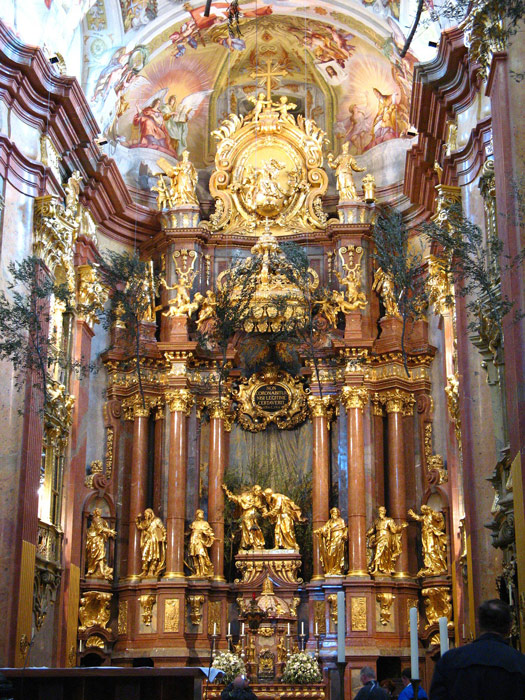
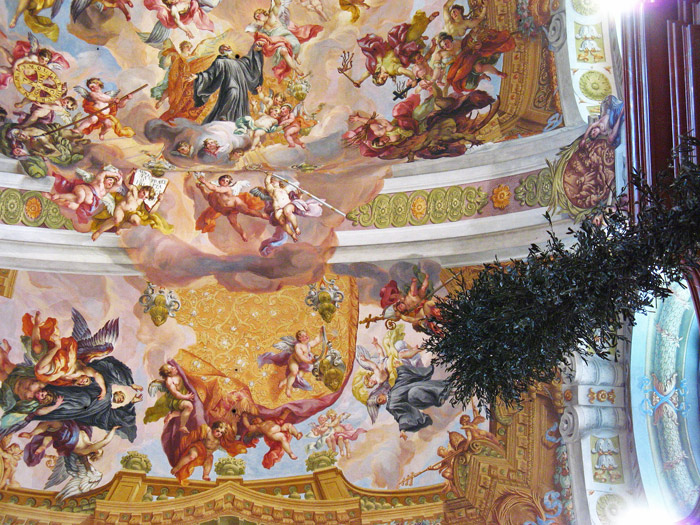
Back on earth once again, we checked out the Abbey Park:
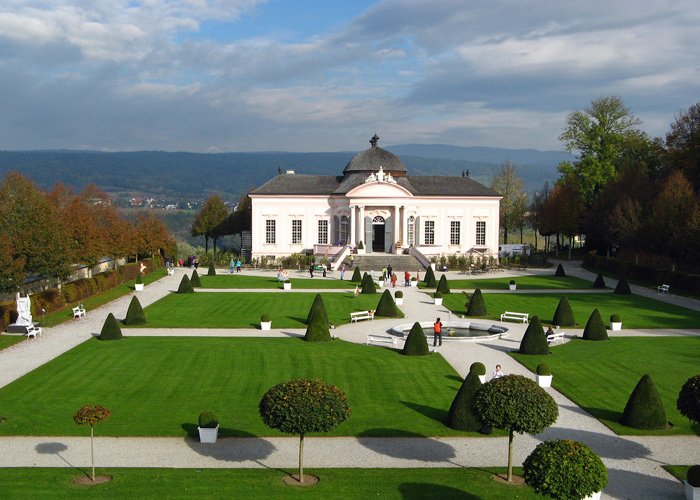
Just to the left of the scene above, is the eastern side of the abbey:
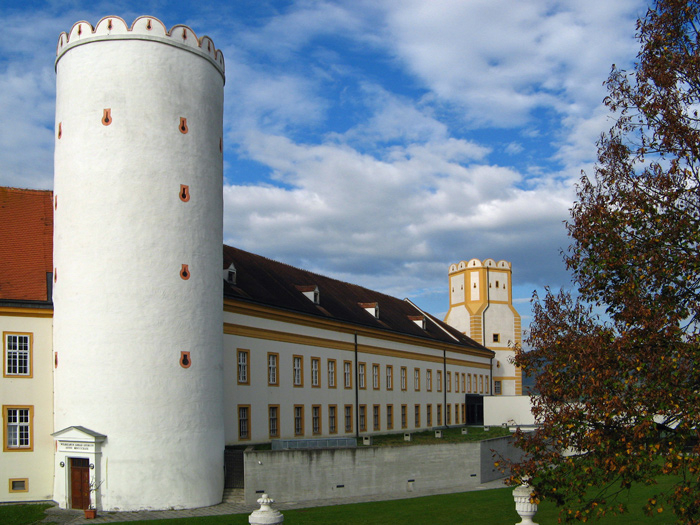
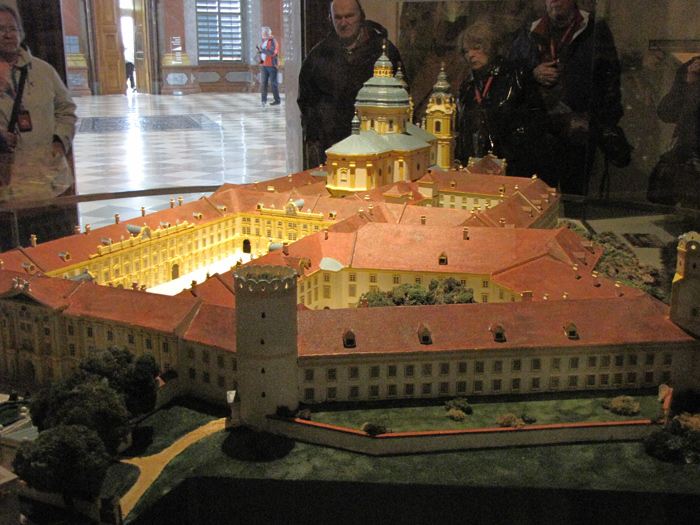
Choosing to walk back to the Freya, we descended to the town and made our presence known:
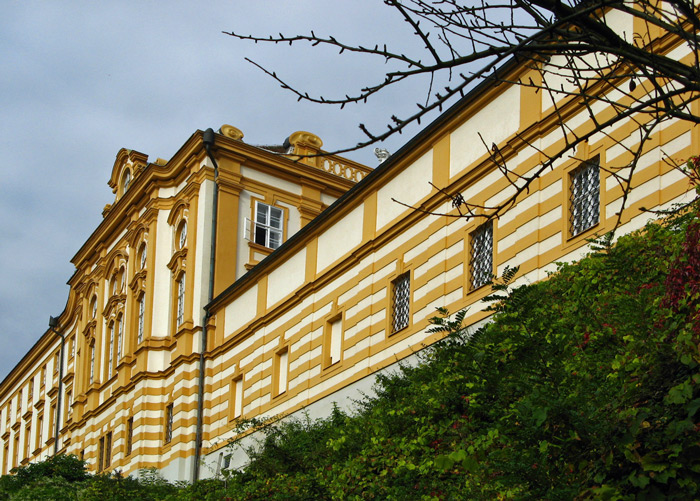
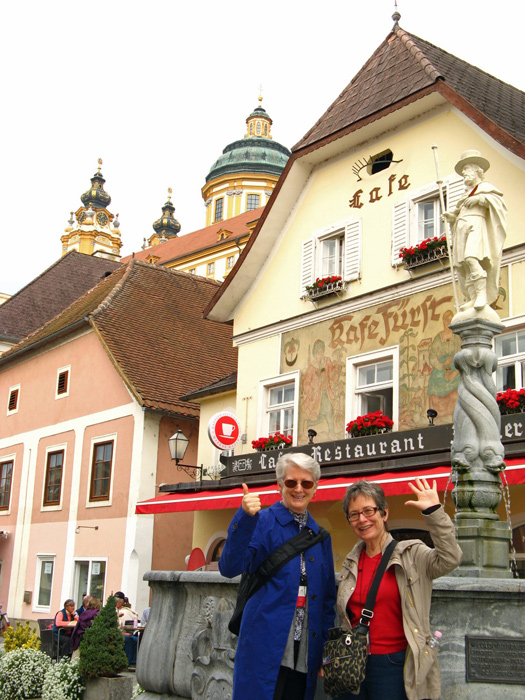
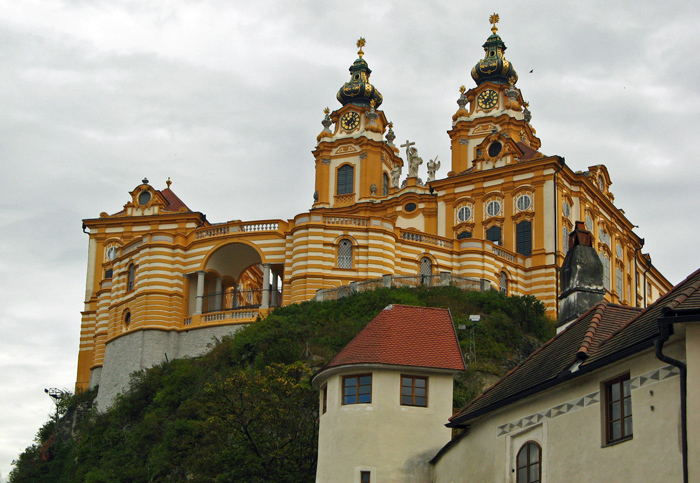
Before turning away for the last time, we pondered this special place where monks still work and pray and students still study. (There are over 900 pupils in the abbey secondary and prep school.)
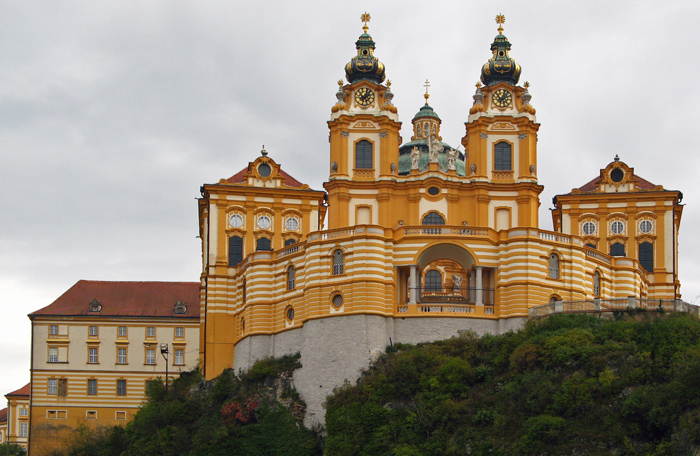
The return to the ship was not lengthy. Some of us learned of a shortcut through the woods and took it:
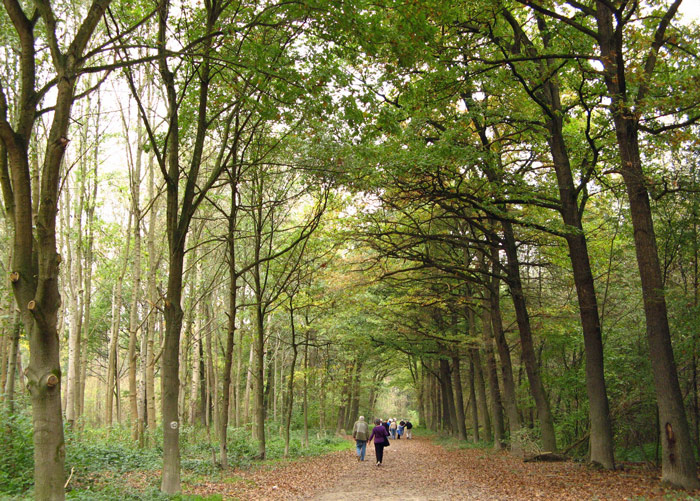
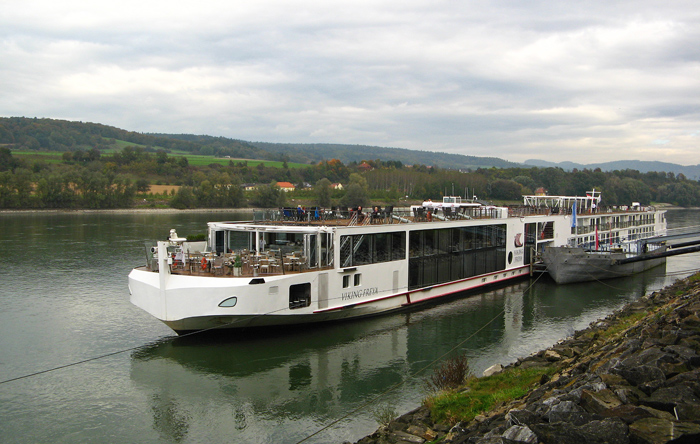
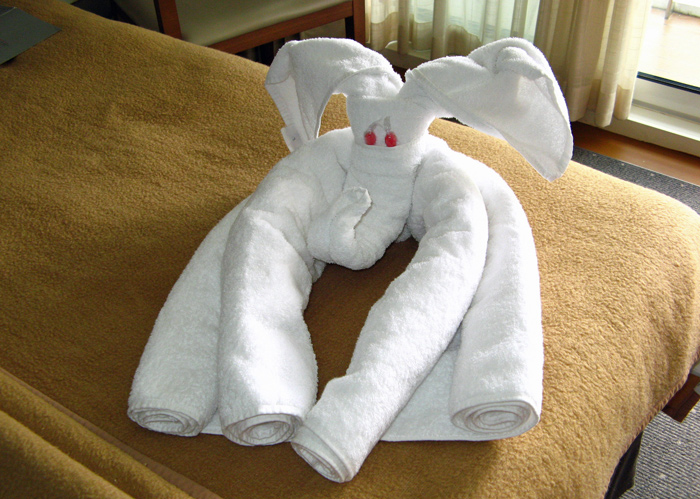
After lunch onboard, our sole duty was to watch the Wachau Valley scenery float by. Almost immediately after casting off, Castle Schonbuhel, dating from the 12th century, came into view:
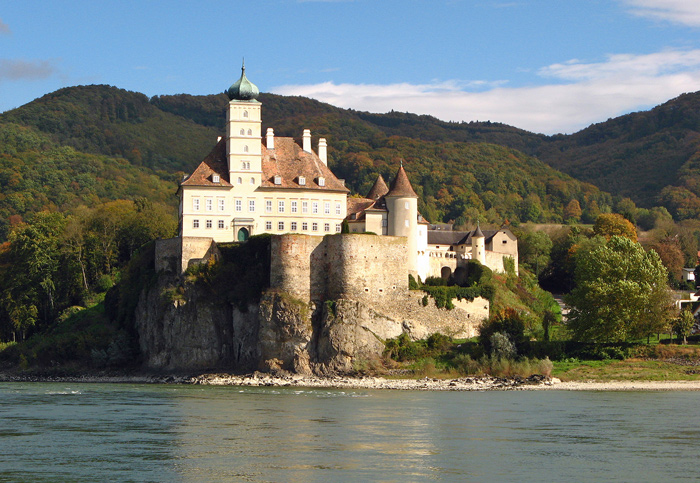
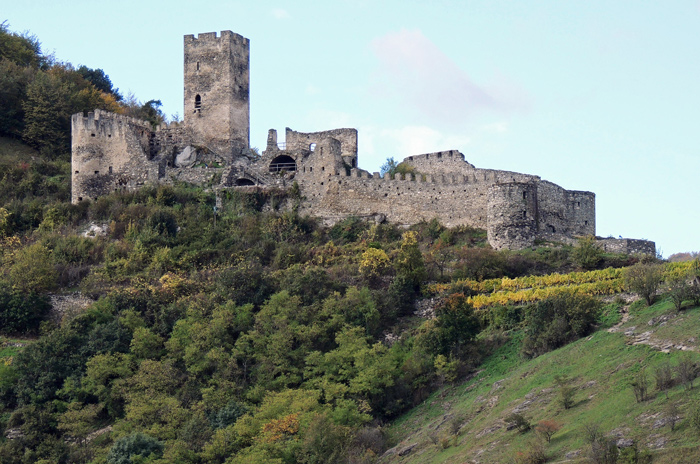
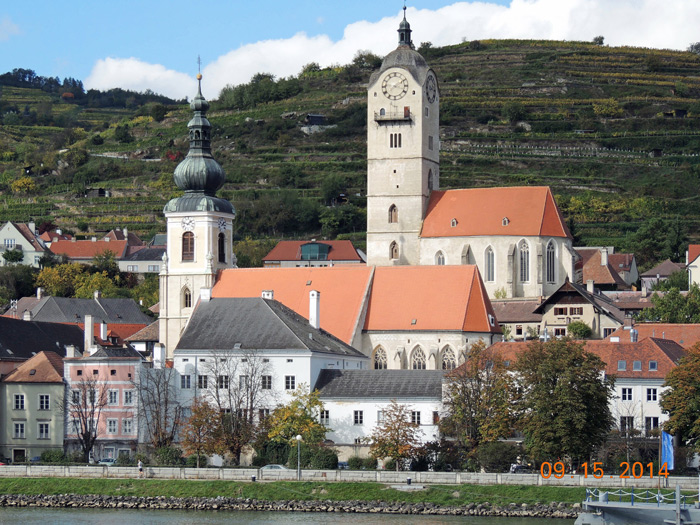
In the early evening, we arrived in Vienna but not before a steady rain began to fall. Many had chosen to attend an optional concert in the city after dinner. Given the rain, we opted for dancing onboard. However, our own weariness and the floor’s stickiness cut our evening short. Surely, we thought, tomorrow would be better with plenty of sunshine.